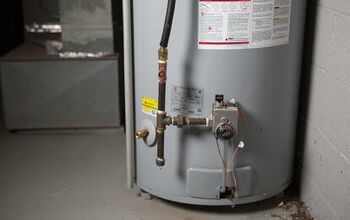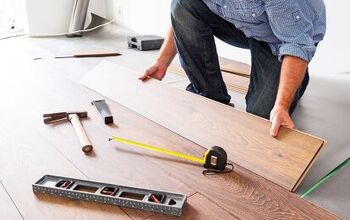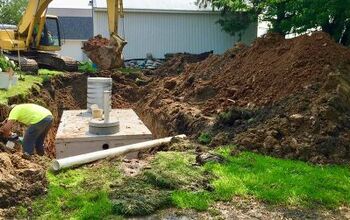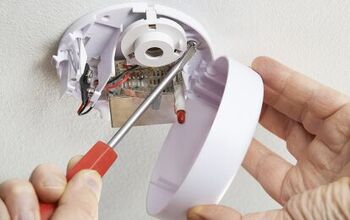How To Stage Your Home For A Quick And Profitable Sale

When it comes to selling houses, there are two things every seller can agree on. They want their house to sell quickly and make a substantial amount of money. Of course, the market has a lot to say about things, but staging your home can improve your chances of reaching these goals.
Staging your home doesn’t have to cost a lot of money. Spruce up curb appeal to enhance your home’s first impression. Next, focus on things like depersonalizing, decluttering, deep cleaning, and maximizing natural light. Neutralize your color palette to appeal to a wider range of buyers. Rearrange furniture to create a good flow throughout the home.
Staging the living room is a top priority for many sellers, with the primary bedroom and kitchen following closely behind. Overall, a general refresh of these spaces, the bathrooms, and your home’s exterior can help boost the impression your home makes on buyers.
Stage Your Home To Appeal To Many Buyers
Staging your home has several benefits. Primarily, real estate agents recommend that you stage your home to increase its appeal to most buyers. (You’re never going to please everybody.) However, it’s not just about making your home look tidy or trendy (and going too trendy could turn off buyers instead of attracting them).
When someone (or you) stages your home well, you invite buyers to imagine themselves living in the home. Staging focuses on creating a neutral, warm atmosphere that leaves a positive first impression.
Your goal should be to fashion a welcoming environment that stirs an emotional response within buyers. Ideally, buyers form a connection with your house and start to envision it as their own.
You don’t have to spend thousands of dollars to stage your house. Instead, focus on these actionable staging tips to enhance your home’s appeal and lead to a successful sale.
1. Start With Curb Appeal
Your home’s exterior is the first thing buyers see, so it needs to be great. If buyers don’t like what they see on the outside, most of the time, they don’t bother checking out the inside of the house.
You don’t need to spend a lot of money here. Focus on the basics.
- Mow the lawn, trim bushes, weed the garden, and clear all pathways.
- Clean the windows, light fixtures, and shutters.
- Replace broken or burnt-out light bulbs.
- Rent a pressure washer and freshen up your porch, siding, driveway, etc.
- Replace or paint worn-out house numbers.
- Paint the front door a welcoming color.
- Add a few fresh flowers to the garden or some planters on the porch.
- Get a new welcome mat.
2. Get Rid Of Clutter
Nobody wants to see a bunch of clutter, especially when it belongs to someone else. The best thing about decluttering your home is that it doesn’t cost you a thing, except your time. Less clutter makes a room feel larger and contributes to a more stress-free atmosphere.
Clear out excess furniture and accessories and organize your closets and cabinets (yes, buyers will look inside of them). You want buyers to get the impression that your home has room to spare, so they don’t assume there isn’t enough storage.
3. Pare Down Personal Items
As you’re decluttering, focus on depersonalizing your home as well. It’s important to start viewing your home as a house — a structure that could be a home for anyone.
Remove family photos, religious symbols, political paraphernalia, children’s artwork, and other unique items. The idea is for buyers to see themselves living in the home, and that’s hard to do when your personal belongings and memories are around every turn.
4. Deep Clean Your Home
Another big part of staging your home that is one of the most important (and also doesn’t have to cost you anything) is cleaning. Think about it. Would you be impressed if you looked at a home with grimy bathrooms, stained carpets, and dusty shelves?
Aside from the gross-out factor, a dirty house also makes buyers wonder how well-cared-for a home is. If they see a lot of dirt and dust, they might assume you didn’t take care of things like plumbing, AC maintenance, etc.
No matter what time of year you’re selling, it’s time to do a little spring cleaning in your home. Tackle the chores you don’t normally do, like cleaning light fixtures, dusting baseboards, scrubbing grout, and shampooing carpets. If you really despise cleaning, and you have it in the budget, hire professionals to do the deed for you.
5. Neutralize The Space
Since the goal of staging is to make your home appeal to a lot of different buyers, it’s best to keep things neutral. A neutral palette helps buyers picture their belongings in the space.
If you have any bold color choices in your home, repaint. It’s time to bid farewell to your daughter’s hot pink bedroom and the lime-green kitchen from your HGTV era.
Typically, warmer neutrals help create a more welcoming vibe. Keep accessories subtle and inviting, using rugs, throw pillows, and art with mass appeal.
6. Brighten Things Up
A dark home doesn’t usually provide the welcoming, cozy atmosphere you think it does. People usually feel cramped, tired, and low-energy when it’s dim or hard to see. Not to mention that low light makes it challenging for people to assess your home properly.
Open blinds and curtains. If your window treatments are too heavy or dark, remove them. No curtains are better than oppressive ones. (Just make sure your windows are in good shape and clean.)
Make sure all bulbs are working and replace dim ones with daylight bulbs. Look for dark spots and fill in the gaps with artificial lighting, like a lamp or wall sconce. Mirrors also help bounce light around a room, making it seem brighter and more open.
7. Assess The Flow
Perform a trial run of your home staging and put yourself in a buyer’s shoes. Walk through your house, starting at the front door where buyers will enter. Move from room to room and see how things flow.
You want to move seamlessly from one room to the next without bumping into furniture or having to take wide turns or detours around bulky pieces. Rearrange items to improve flow where needed. Define zones, seating areas, and other specific spots by using rugs, strategic furniture placement, and lighting.
8. Add A Few Finishing Touches (But Not Too Many)
As you can see, most of these steps don’t involve spending a lot of money. Therefore, there’s no reason you can’t tackle these basic home staging tips when trying to sell your house. But if you do have a budget for staging, add a few finishing touches to help boost your home’s appeal even more.
Update cabinet hardware in the kitchen and bathrooms. Put out a vase of fresh flowers or a bowl of fresh fruit. Replace the bedding with plush, hotel-like sheets and blankets, and get new, crisp towels in the bathroom. Set the table with contemporary, neutral dishes and flatware to add an inviting, homey touch.
If some of your main furniture pieces are worn down or outdated, replace them with more updated items. You can always take these with you to your next home. However, no matter what finishing touches you decide to add, limit yourself to avoid things looking cluttered and overwhelming.
Talk to your agent about the possibility of using a professional stager. Stagers typically have pieces they can use for staging purposes included in the cost of their fee.
Staging Your Home To Win The Sale
Before you decide to stage your home, ask your agent for their recommendations. You might only need to do a few of the basic things on this list, which you would most likely handle yourself.
However, if your home is on the market for a while, keep an open mind. If you’re struggling to sell, it could make sense to undergo more advanced staging, maybe even hiring a pro.
Overall, making your home look better and broadening its appeal to more buyers is going to pay off in the long run. But you need to balance what you spend on staging with the ROI it will realistically bring. The ultimate goal is a successful sale, so stage your home with that finish line in mind.
Related Guides:
- What Makes A Home Hard To Sell?
- What Not To Fix When Selling A House?
- Home Fixes You Must Complete Before Selling

Stacy Randall is a wife, mother, and freelance writer from NOLA that has always had a love for DIY projects, home organization, and making spaces beautiful. Together with her husband, she has been spending the last several years lovingly renovating her grandparent's former home, making it their own and learning a lot about life along the way.
More by Stacy Randall











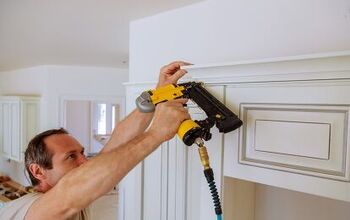
![10 Best Zero Turn Mowers – [2022 Reviews & Ultimate Buyer's Guide]](https://cdn-fastly.upgradedhome.com/media/2023/07/31/9070522/10-best-zero-turn-mowers-2022-reviews-ultimate-buyer-s-guide.jpg?size=350x220)
![How Much Weight Can a 4×4 Support Horizontally? [It Depends!]](https://cdn-fastly.upgradedhome.com/media/2023/07/31/9070333/how-much-weight-can-a-44-support-horizontally-it-depends.jpg?size=350x220)


